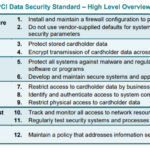In the ever-evolving digital landscape, antivirus software has become a crucial line of defense against malicious threats. But what makes modern antivirus software truly effective in detecting and combating these threats? The answer lies in the role machine learning plays in these programs. By analyzing vast amounts of data and learning from patterns, machine learning algorithms are able to enhance the detection rates of antivirus software, providing a higher level of protection for your digital devices. Let’s explore the fascinating ways in which machine learning improves the capabilities of antivirus software and helps keep you safe in the online world.

Understanding Antivirus Software
Define antivirus software
Antivirus software is a powerful tool designed to protect your computer system from malicious software, also known as viruses. It acts as a shield, actively scanning for and removing any potential threats that may harm your device. Antivirus software is an essential component of cybersecurity, serving as the first line of defense against viruses, malware, ransomware, and other types of cyber threats.
Role of antivirus in computer system protection
The primary role of antivirus software is to safeguard your computer system from viruses and other malicious programs. It utilizes a combination of detection methods, including signature-based detection, heuristic analysis, and behavior monitoring, to identify and eliminate threats in real-time. By constantly monitoring your system and network, antivirus software provides protection against known threats and detects suspicious activities that may indicate the presence of new, unidentified threats.
Traditional methods of virus detection
Traditional methods of virus detection in antivirus software primarily rely on signature-based detection. This technique involves comparing files and programs on your computer to an extensive database of known virus signatures. If a match is found, it indicates the presence of a virus, and the antivirus software takes appropriate action to quarantine or eliminate the threat. While signature-based detection is effective against known viruses, it may struggle to detect new and evolving threats that do not match existing signatures.
Introduction to Machine Learning
What is machine learning
Machine learning refers to the branch of artificial intelligence that enables computers to learn from data and make intelligent decisions without being explicitly programmed. It involves the development of algorithms and models that allow computers to analyze large amounts of data, identify patterns, and make predictions or decisions based on this analysis. In the context of antivirus software, machine learning can provide a more proactive and effective approach to threat detection and prevention.
Brief overview of machine learning operation
In machine learning, computers learn through a process called training. Training involves exposing the computer to a large amount of labeled data, where the correct outcome or classification is known. The computer then uses this data to learn patterns and develop models that can predict outcomes or classify new, unseen data. This process allows antivirus software to learn and adapt to evolving threats, enhancing its ability to detect and mitigate potential risks.
Types of machine learning and their functions
There are three main types of machine learning used in the context of antivirus software: supervised learning, unsupervised learning, and reinforcement learning.
-
Supervised learning involves training the computer using labeled data, with known input and output pairs. This type of machine learning is commonly used for tasks such as classifying files as safe or malicious based on known attributes.
-
Unsupervised learning involves training the computer using unlabeled data, allowing it to identify patterns and group similar data together. Unsupervised learning can be beneficial in detecting unexpected behaviors or anomalies that may indicate the presence of malware.
-
Reinforcement learning involves training the computer through trial and error, where it receives feedback or rewards for its actions. This type of machine learning can be used to improve decision-making processes and optimize antivirus software’s responses to emerging threats.
Intersection of Machine Learning and Antivirus Software
Overview of machine learning in antivirus software
The integration of machine learning in antivirus software has revolutionized the way threats are detected and mitigated. By leveraging machine learning algorithms, antivirus software can analyze vast amounts of data and identify patterns that indicate malicious activity. This approach allows for real-time threat detection, significantly enhancing overall system security.
Reasons for integrating machine learning into antivirus software
There are several compelling reasons for integrating machine learning into antivirus software:
-
Improved threat detection: Machine learning algorithms can analyze complex patterns and behaviors, enabling antivirus software to detect emerging and zero-day threats that may bypass traditional detection methods.
-
Reduced false-positive rates: Machine learning can help antivirus software differentiate between legitimate files and potentially harmful ones, reducing false-positive detections and minimizing disruption to users.
-
Enhanced system performance: By leveraging machine learning, antivirus software can optimize system resources and prioritize threat mitigation, resulting in faster response times and improved overall system performance.
-
Adaptive defense: Machine learning capabilities allow antivirus software to continuously learn and adapt to evolving threats, improving its ability to protect against new and emerging types of malware.
Machine Learning Applications in Antivirus Software
Analyzing behavior patterns
One of the key applications of machine learning in antivirus software is the analysis of behavior patterns. Machine learning algorithms can learn and understand the normal behavior of files, applications, and processes on a computer system. Any deviation from the learned patterns can trigger an alert, indicating potential malicious activity. This approach allows antivirus software to detect malware that may not exhibit typical characteristics or signatures, providing a more proactive defense.
Identifying new threats
Machine learning algorithms excel in identifying new and previously unknown threats. By analyzing large datasets and identifying patterns and similarities among files, machine learning models can identify potentially malicious files even without specific signature matches. This capability is particularly crucial for tackling newly developed malware or targeted attacks that often bypass traditional signature-based detection methods.
Improving system response times
Machine learning algorithms enable antivirus software to optimize system performance and response times. By continuously learning and adapting to the specific system and user behavior, antivirus software can prioritize and streamline threat mitigation efforts. This approach minimizes system impact and reduces the time taken to neutralize threats, ensuring a seamless user experience while maintaining a high level of security.
Reducing false-positive rates
False positives occur when antivirus software mistakenly flags legitimate files or applications as malicious. Machine learning can assist in reducing false positives by improving the accuracy of detection mechanisms. By training on large datasets, machine learning algorithms can differentiate between benign and potentially harmful files, reducing the chances of false alarms. This allows users to work uninterrupted while ensuring that genuine threats are promptly addressed.
Effect of Machine Learning on Virus Detection Rates
Empirical evidence of improved detection rates
Empirical evidence suggests that the integration of machine learning in antivirus software leads to significantly improved virus detection rates. Traditional signature-based methods often struggle with new and evolving threats, resulting in missed detections. In contrast, machine learning-based approaches can detect complex and previously unknown threats, providing an additional layer of defense. Studies have shown that machine learning algorithms can detect previously undetectable malware with higher accuracy rates, making them indispensable in modern antivirus systems.
Machine learning’s role in instant threat recognition
Machine learning plays a crucial role in instant threat recognition, allowing antivirus software to identify and respond to threats in real-time. Traditional detection methods, such as signature matching, may require frequent updates to keep up with emerging threats. Machine learning provides a more proactive approach by analyzing real-time data and identifying anomalous patterns or behaviors that may indicate the presence of malware. This capability enables antivirus software to take immediate action, preventing potential damage or data breaches.
The influence of machine learning on proactive detection
Proactive detection is essential in mitigating and preventing the damage caused by new and unknown threats. Machine learning is instrumental in proactive detection, as it can identify patterns and behaviors indicative of malicious intent. By continuously analyzing and learning from data, machine learning algorithms can identify subtle changes in file structures, code execution, or network traffic, signaling the presence of malware. This early detection enhances the antivirus software’s ability to protect systems and prevent attacks before significant damage occurs.
Real-World Examples of Machine Learning in Antivirus Software
Case study of machine learning in antivirus software
One notable case study highlighting the effectiveness of machine learning in antivirus software is the use of deep learning algorithms in detecting malicious emails. Deep learning, a subset of machine learning, excels at pattern recognition and analyzing unstructured data. Antivirus software leveraging deep learning algorithms can accurately classify email attachments and detect potential phishing attacks or malware-laden files, significantly improving email security.
Reports on the effectiveness of machine learning in antivirus applications
Various industry reports and studies have confirmed the effectiveness of machine learning in antivirus applications. These reports highlight the superior detection rates achieved by machine learning algorithms compared to traditional methods. With the ability to analyze large datasets and learn from them, machine learning-based antivirus software has demonstrated higher accuracy rates in detecting known threats, as well as identifying new and emerging malware strains.
Feedback and reviews on machine learning-based antivirus systems
Feedback and reviews from users of machine learning-based antivirus systems consistently highlight the enhanced security and improved user experience. Users appreciate the increased detection rates, which minimize the risk of infections from unknown threats. Machine learning algorithms’ ability to reduce false-positive rates has also garnered positive feedback, ensuring that legitimate files and applications are not mistakenly flagged. Overall, users find machine learning-based antivirus systems to be more efficient, reliable, and effective in protecting their systems.
Challenges in Implementing Machine Learning in Antivirus Software
The complexity of machine learning integration
Implementing machine learning in antivirus software can be a complex process. It requires a deep understanding of machine learning algorithms, data preprocessing, feature engineering, and model validation. Integrating machine learning capabilities into existing antivirus software may also require significant software engineering efforts and expertise. Additionally, continuous training and updating of models to keep up with new threats pose ongoing challenges in maintaining optimal performance.
Issues of privacy and data security
Machine learning in antivirus software heavily relies on data, including file attributes, network traffic patterns, and behavioral data. However, this reliance raises concerns about privacy and data security. Antivirus software must ensure that user data remains confidential and protected from unauthorized access. Striking a balance between utilizing data for training and preserving user privacy poses a significant challenge for antivirus software developers and requires robust privacy practices and protections.
Potential for system vulnerabilities
Integrating machine learning into antivirus software introduces the potential for system vulnerabilities. Malicious actors may exploit vulnerabilities in machine learning models to launch attacks or manipulate the behavior of antivirus software. Adversarial attacks, where an attacker intentionally manipulates data or features to deceive the machine learning model, pose a particular risk. Ongoing research is essential to identify and mitigate these vulnerabilities, ensuring the integrity and reliability of machine learning-based antivirus systems.
Future Outlook for Machine Learning and Antivirus Software
Predicted advancements in machine learning for antivirus systems
The future of machine learning in antivirus software looks promising, with several advancements on the horizon. One key area of focus is the development of more sophisticated deep learning algorithms to enhance the detection and analysis of malware. Additionally, the integration of natural language processing techniques can improve the detection and prevention of social engineering attacks. The incorporation of cloud-based machine learning models and collaborative threat intelligence can also provide real-time protection and further improve detection rates.
Future challenges for machine learning in virus detection
While machine learning continues to evolve, it also faces challenges in virus detection. As adversaries constantly adapt and develop new evasion techniques, machine learning models need to stay ahead of these advances. Adversarial machine learning, where attackers exploit vulnerabilities in machine learning algorithms, is another evolving challenge that antivirus software developers must address. Continuous research, updates, and collaborations between security experts and data scientists will be essential to overcome these challenges.
The potential impact of new machine learning techniques
New machine learning techniques, such as federated learning and transfer learning, may have a significant impact on antivirus software. Federated learning allows multiple devices or organizations to collaboratively train models without sharing sensitive data, enabling more extensive and diverse datasets for training. Transfer learning allows models pretrained on one task or domain to be adapted and applied to another, potentially enhancing antivirus software’s adaptability to new threats. As these techniques mature, they have the potential to further improve detection rates and reduce false positives.
Role of Users in Machine Learning-Based Antivirus Software
User responsibilities in maintaining a secure system
While machine learning-based antivirus software provides advanced protection, users also play a crucial role in maintaining a secure system. Users should practice safe browsing habits, avoid clicking on suspicious links or downloading files from untrusted sources, and regularly update their operating systems and antivirus software. Practicing good password hygiene, enabling firewalls, and using multi-factor authentication are additional measures users can take to enhance their system’s security.
How users can benefit from machine learning in antivirus software
Users can benefit significantly from machine learning in antivirus software. Machine learning algorithms enable faster and more accurate threat detection, reducing the risk of infections and data breaches. By leveraging machine learning, antivirus software can adapt to new and evolving threats, providing users with up-to-date protection. Advanced real-time analysis of user behavior also enables machine learning-based antivirus software to detect and warn users about potential phishing attempts or suspicious activities, further enhancing user security.
User awareness and understanding of machine learning in antivirus systems
User awareness and understanding of machine learning in antivirus systems are crucial for maximizing its effectiveness. Educating users about the capabilities and benefits of machine learning-based antivirus software can empower them to make informed decisions and take appropriate action. User-friendly interfaces and clear explanations of the software’s behavior can help build trust and encourage users to actively participate in maintaining a secure system. The development of user education programs and resources can further raise awareness and foster a collective defense against cyber threats.
Conclusion
In conclusion, machine learning has revolutionized the field of antivirus software, significantly improving threat detection rates and overall system security. By integrating machine learning algorithms, antivirus software can better analyze behavior patterns, identify new threats, improve system response times, and reduce false-positive rates. Empirical evidence confirms the effectiveness of machine learning in antivirus applications, with real-world examples demonstrating its positive impact. Nonetheless, challenges such as complexity, privacy concerns, and potential vulnerabilities require ongoing research and development. The future outlook for machine learning in antivirus software is promising, with predicted advancements and new techniques poised to further enhance protection. Users also play an essential role in maximizing the benefits of machine learning-based antivirus software through their responsible behavior and understanding of its capabilities. With continued advancements and user awareness, machine learning holds the key to a safer and more secure digital environment.







